Coyotes really don’t like biting flies. In fact I believe I can safely say that they truly hate horse flies and deer flies in particular.
1/800. f/6.3, ISO 640, Canon 7D, 500 f/4, 1.4 tc, not baited, set up or called in
This fine specimen had been hunting for voles on Antelope Island when, as they are prone to do, it climbed on top of a boulder for a better view of its surroundings. The setting is cluttered but I had a clear view of the coyote on an elevated perch so I fired away. There was mixed sun and clouds so in this series you’ll notice significant variations in the tones of the images.
1/400. f/8, ISO 500, Canon 7D, 500 f/4, 1.4 tc, not baited, set up or called in
These photos were taken in August – prime time for biting flies. Mosquitoes and biting gnats don’t seem to bother coyotes too much but they sure don’t like horse flies and deer flies. Here a deer fly has landed its snout. The coyote tried to ignore it for a few seconds…
1/400. f/8, ISO 500, Canon 7D, 500 f/4, 1.4 tc, not baited, set up or called in
but in the end it just couldn’t resist swiping at the annoying insect with its long tongue. I wish I’d caught the tongue wrapped up and over the snout but I was just a little late.
1/800. f/8, ISO 500, Canon 7D, 500 f/4, 1.4 tc, not baited, set up or called in
Here you see the reaction of the coyote to the deer fly directly over its head.
1/800. f/8, ISO 500, Canon 7D, 500 f/4, 1.4 tc, not baited, set up or called in
Then the insect moved to a less vulnerable place over its haunches…
1/2000. f/7.1, ISO 500, Canon 7D, 500 f/4, 1.4 tc, not baited, set up or called in
which allowed the coyote to give me a perky, “smiling” pose that I like.
I know well from experience that deer fly bites hurt and coyotes are particularly vulnerable to them around their face and ears. They often snap at biting flies with their jaws and when they catch them they typically eat them but they do so very quickly, though carefully. From their reaction it’s quite obvious (and amusing) when they don’t kill the fly fast enough and they’re bitten inside the mouth but they seem very willing to take the risk. Perhaps it’s the revenge factor – the same satisfaction I get when I kill one that’s been biting me…
Ron
Note: If I’m not mistaken this coyote has an injured lower right leg – perhaps an old break. The joint looks swollen and the lower leg seems to be turned outward (best seen in the second and third photos). It’s very common to see coyotes limping, sometimes severely but I don’t remember that this one was noticeably limping so perhaps the injury is an old one that is no longer causing significant pain.


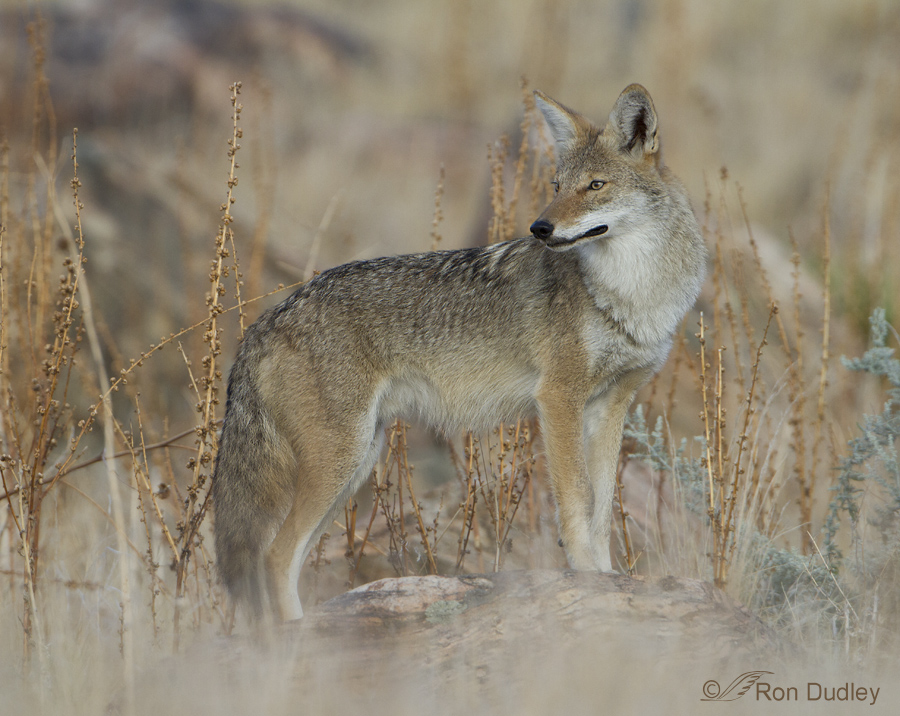
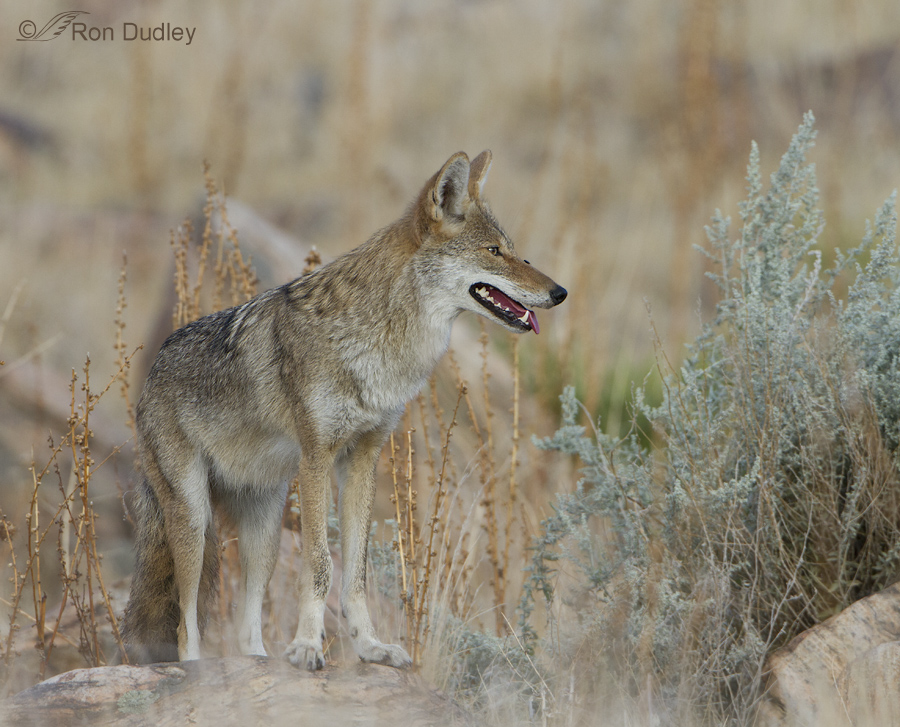
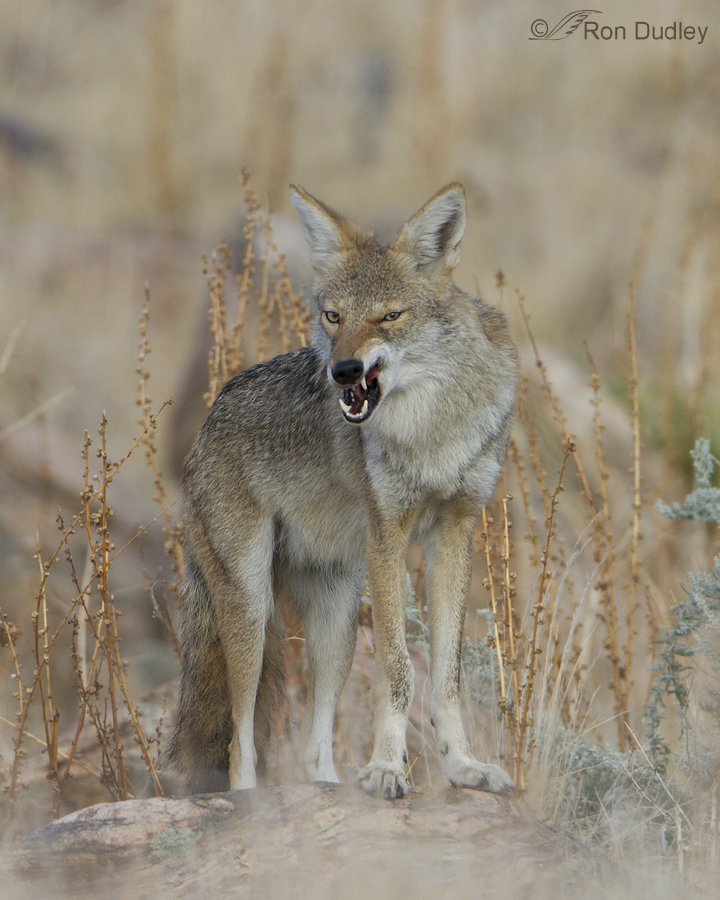
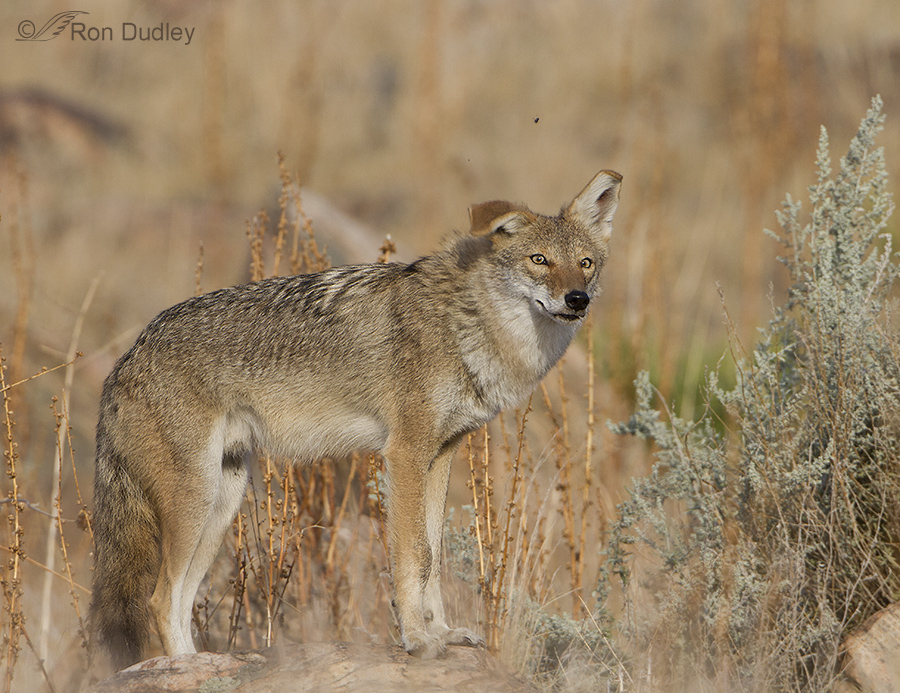
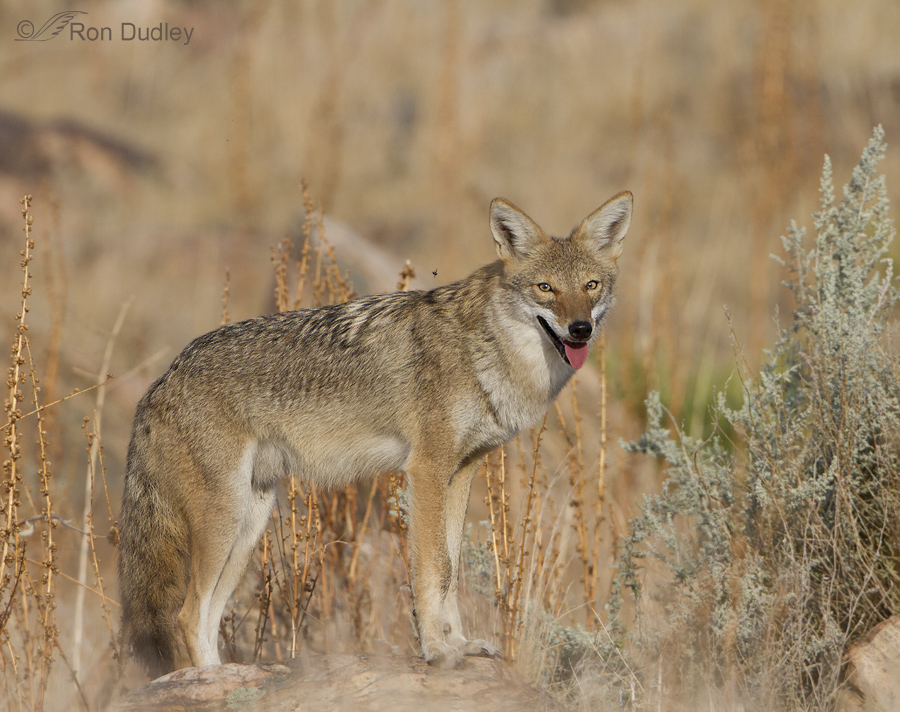
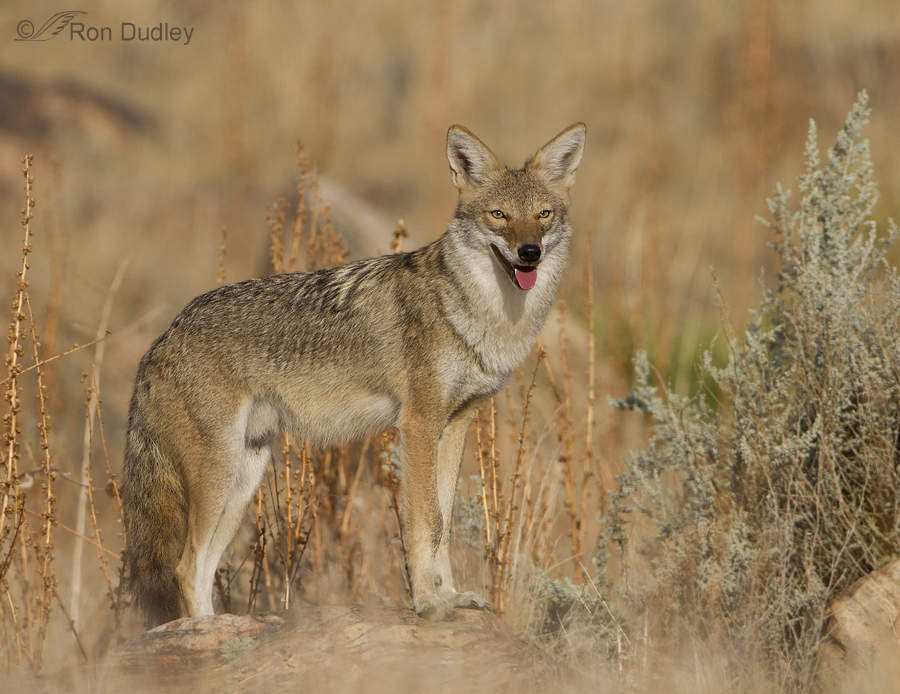
This guy has such a wonderfully expressive face! One of the good things about reading blogs in reverse order is that in looking at this coyote I realized that he appears to have the same pattern on his shoulders that the young one in yesterday’s (May 11) post had.
Good eye, Susan. You’re right!
Another great image to begin a new day! Thanks Ron! I agree with Sharon Constant, your “analysis” is something I very much look forward to. It helps me a lot with my photography and makes your images so much more complete. Thank you again
Thank you for the information Ron. Always interesting.
I can relate to the coyote-remember being bitten by horse and deer flies-painful! Very comical with the flop-eared shot.
What sensational images Ron! Thanks so much for sharing them.
Charlotte
love, love, love, love!!!!!
Thanks for sharing this entertaining series. The injured leg demonstrates the resilience coyotes and many other wild animals must possess to survive. You said you see many coyotes limping. Why do you suppose this happens? I was thinking about traps or other predation on the coyotes by people, other canines, etc.
Wendy, Trapping and hunting of coyotes on Antelope Island isn’t allowed. I suspect the leg injuries I’ve seen are caused by the everyday challenges of survival – catching and digging for food, jumping around from rock to rock, running on uneven terrain, fights – things like that.
Ron, your photos are absolutely amazing! Thanks so much for sharing your talent and these beautiful animals.
Thank you, Jan.
I was wondering about that “turn-out” of the right foot. S/he really is a lovely animal – sleek, and nice young teeth! A great series of shots. I really enjoy your postings.
Good eye to notice the turned out foot, Deborah. I didn’t notice it until I was processing the images.
Another cold, gray, nasty day to wake up to…freezing rain, sleet, YUK! But, my grumpy mood changed completely with this series with that poor, bedeviled coyote. I LOVE his expressions! I wondered about that leg, too…otherwise, he’s a very healthy, handsome looking character.
I’m glad your grumpy mood has been improved, Patty – and that I had something to do with it!
Priceless! I guess that feeling when something is persistently buzzing about you, looking for a prime spot to bite you, is universal!
I think we all get that feeling, Leisa – humans and at least some critters.
Great sequence Ron. What an expressive face !
Thank you, John.
Hi Ron, Great pictures as I’ve learned to anticipate and ENJOY so much! As an amateur photographer, I enjoy your image analysis very much. Although I shoot with Nikon, I think Canon should contact you about a commercial, your images are so sharp and clear and exceptional….!!
Thanks for the compliment, Bill. Never been in a commercial…
Beautiful and fun. I appreciate that you share your analysis of your images with us (variation in images due to lighting conditions, foreground/background). It reminds me that if I want to improve my images, I need to be always be looking at them with a more critical eye.
Thanks for the feedback on my “analysis” of lighting conditions etc, Sharon. Sometimes I don’t know whether to include that stuff or not.
Absolutely gorgeous photos! Love the “smile” – thanks so much for sharing.
Thanks, Patricia. Coyotes really can almost appear to be smiling.